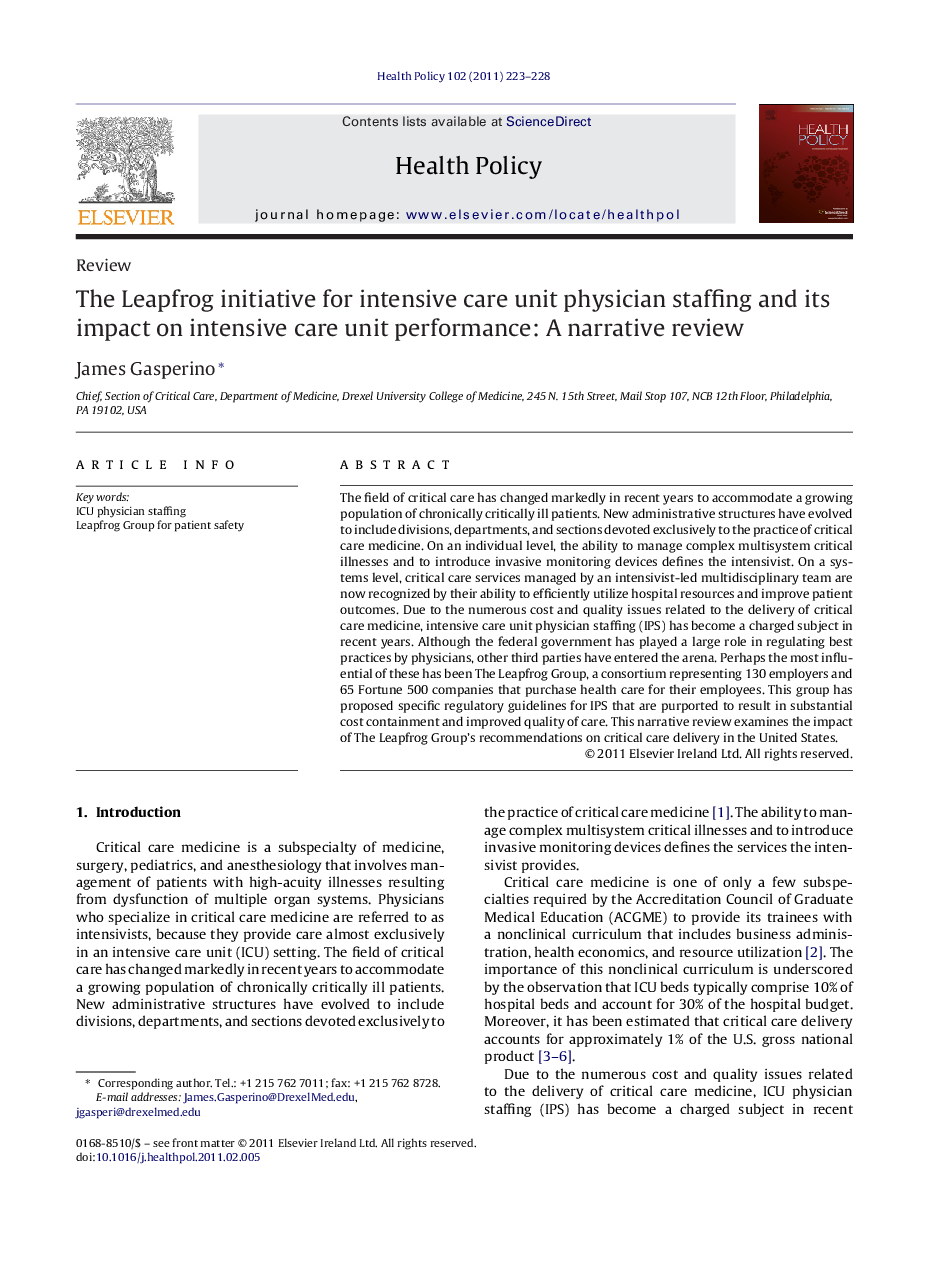| Article ID | Journal | Published Year | Pages | File Type |
|---|---|---|---|---|
| 4198119 | Health Policy | 2011 | 6 Pages |
The field of critical care has changed markedly in recent years to accommodate a growing population of chronically critically ill patients. New administrative structures have evolved to include divisions, departments, and sections devoted exclusively to the practice of critical care medicine. On an individual level, the ability to manage complex multisystem critical illnesses and to introduce invasive monitoring devices defines the intensivist. On a systems level, critical care services managed by an intensivist-led multidisciplinary team are now recognized by their ability to efficiently utilize hospital resources and improve patient outcomes. Due to the numerous cost and quality issues related to the delivery of critical care medicine, intensive care unit physician staffing (IPS) has become a charged subject in recent years. Although the federal government has played a large role in regulating best practices by physicians, other third parties have entered the arena. Perhaps the most influential of these has been The Leapfrog Group, a consortium representing 130 employers and 65 Fortune 500 companies that purchase health care for their employees. This group has proposed specific regulatory guidelines for IPS that are purported to result in substantial cost containment and improved quality of care. This narrative review examines the impact of The Leapfrog Group's recommendations on critical care delivery in the United States.
